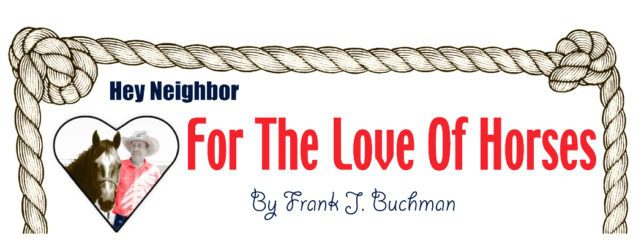The United States Team Roping Championship at Hutchinson was canceled.
There was discussion about not having several rodeos, jackpots, barrel races, horse shows and horse sales.
However, all of those other events in Kansas were conducted as scheduled, unless the cancellation was not widely reported.
Yet, several horse functions in other states were canceled.
Consequently, conversation was rampant at every horse activity and among horse owners throughout the country after increasing numbers of confirmed cases of horses testing positive to and horse deaths blamed on the EHV-1 virus.
The National Cutting Horse Association competition in Ogden, Utah, earlier this month, is believed to be the origin of the neurological equine herpes virus outbreak.
Now, veterinarians are diagnosing and treating both confirmed and suspected EHV-1 cases to try to slow or stop spread of the virus.
“Equine herpesvirus-1 is highly contagious and can cause respiratory disease, neurological disorders and death,” described Dr. Keith Roehr, state veterinarian for Colorado.
“The virus is generally passed from horse to horse via aerosol transmission when affected animals sneeze or cough and come in contact with nasal secretions,” Roehr said. “The virus can also spread through the air, contaminated equipment, clothing and hands.”
Fortunately, the virus is not transmissible to humans.
Clinical signs of EHV-1 include fever, decreased coordination, nasal discharge, urine dribbling, loss of tail tone, hind limb weakness, leaning against a fence to maintain balance, lethargy and inability to rise, according to Roehr.
“Incubation period of EHV-1 is typically two-10 days, but there have been cases of horses showing symptoms as many as 12 days after contamination,” Roehr related.
While there is no cure, the symptoms of the disease may be treatable.
“Only one Kansas horse attended the cutting horse nationals in Utah,” according to Patty Stalder, administrator of the Kansas Horse Council, headquartered in Manhattan. “That horse went from Utah to Nebraska where he is in quarantine and has not returned to Kansas.
“As of May 18, the Kansas Animal Health Department is not recommending that any shows or events shut down but is saying there is some risk, and it should be a personal decision. There could be changes in this recommendation at any time,” Stalder added.
Two Nebraska horses, that were in Utah, competed at a show in Kearney, Nebr., four days after the Utah event. “It’s likely that some Kansas horses were at that event. There was one Missouri horse competing in Utah that could have traveled through Kansas going back to Missouri,” Stalder related.
“The virus is very easily transferred by horse-to-horse contact, contaminated hands, equipment, tack, and feed,” Stalder also warned.
While the Spring Spectacular Horse Sale at Farmers & Ranchers Livestock in Salina went on as scheduled, Auctioneer Kyle Elwood stated at the opening of the auction: “EHV-1 is definitely a concern, so it is important to stay away from areas where there has been a problem. Each of us must use extreme caution to prevent exposure and spread of the virus.”
Kansas Livestock Commissioner Bill Brown, a veterinarian, said, “We are closely monitoring the situation, and talking to other states in an effort to obtain the most current information. We do not plan to force cancellation of any horse events at this time, but that could change pending developments or confirmation of EHV-1 in the state.”
Dr. Nicola Pusterla, professor in equine medicine at the University of California, Davis, suggested that the horse-owning public take this outbreak as an initiative to create daily biosecurity programs at their own facilities.
“People are asking, ‘What should we do now?’” Pusterla noted. “Well, we should institute common-sense biosecurity protocol independent of an outbreak status. People should wash their hands, avoid commingling horses and disinfect equipment regularly. That won’t necessarily prevent an outbreak, but it will help minimize the extent of the spread.”
Key points of a biosecurity plan include isolating new animals and those returning to the home premises, supplying clean feed and water, implementing infection-control practices for visitors and personnel and avoiding movement from various locations.
“Especially important is the isolation of sick animals. Any individual horse with clinic sings consistent with EHV-a infection should be place in isolation,” Pusterla recommended.
“Prognosis depends on severity of signs and the period of recumbency,” said Dr. Debra Sellon, equine medicine veterinarian at Washington State University. “There is no specific treatment for EHV-1.
“Treatment of symptoms may include intravenous fluids, anti-inflammatory drugs and other appropriate supportive treatment. Currently, there is no equine vaccine that has a label claim for protection against the neurological strain of the virus,” Sellon claimed.
“We all, as equine owners, trainers, and event producers must do our part to stop the spread of this horrible mutant and deadly virus. Serious thought needs to be made on hosting events within infected states and their bordering neighbors,” Pusterla advised.
+++
